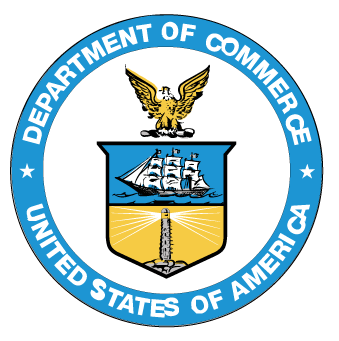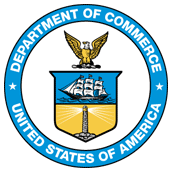Office of Public Affairs
Today, Secretary Wilbur Ross released reports on the U.S. Department of Commerce’s investigations into the impact on our national security from imports of steel mill products and from imports of wrought and unwrought aluminum. These investigations were carried out under Section 232 of the Trade Expansion Act of 1962, as amended. All classified and business confidential information in the reports was redacted before the release.
“I am glad that we were able to provide this analysis and these recommendations to the President,” said Secretary Ross. “I look forward to his decision on any potential course of action.”
The Department of Commerce found that the quantities and circumstances of steel and aluminum imports “threaten to impair the national security,” as defined by Section 232.
The reports are currently under consideration by the President, and no final decisions have been made with regard to their contents. The President may take a range of actions, or no action, based on the analysis and recommendations provided in the reports. Action could include making modifications to the courses of action proposed, such as adjusting percentages.
The President is required to make a decision on the steel recommendations by April 11, 2018, and on the aluminum recommendations by April 19, 2018.
Key Findings of the Steel Report:
- The United States is the world’s largest importer of steel. Our imports are nearly four times our exports.
- Six basic oxygen furnaces and four electric furnaces have closed since 2000 and employment has dropped by 35% since 1998.
- World steelmaking capacity is 2.4 billion metric tons, up 127% from 2000, while steel demand grew at a slower rate.
- The recent global excess capacity is 700 million tons, almost 7 times the annual total of U.S. steel consumption. China is by far the largest producer and exporter of steel, and the largest source of excess steel capacity. Their excess capacity alone exceeds the total U.S. steel-making capacity.
- On an average month, China produces nearly as much steel as the U.S. does in a year. For certain types of steel, such as for electrical transformers, only one U.S. producer remains.
- As of February 15, 2018, the U.S. had 169 antidumping and countervailing duty orders in place on steel, of which 29 are against China, and there are 25 ongoing investigations.
Recommendations of the Steel Report:
Secretary Ross has recommended to the President that he consider the following alternative remedies to address the problem of steel imports:
- A global tariff of at least 24% on all steel imports from all countries, or
- A tariff of at least 53% on all steel imports from 12 countries (Brazil, China, Costa Rica, Egypt, India, Malaysia, Republic of Korea, Russia, South Africa, Thailand, Turkey and Vietnam) with a quota by product on steel imports from all other countries equal to 100% of their 2017 exports to the United States, or
- A quota on all steel products from all countries equal to 63% of each country’s 2017 exports to the United States.
Each of these remedies is intended to increase domestic steel production from its present 73% of capacity to approximately an 80% operating rate, the minimum rate needed for the long-term viability of the industry. Each remedy applies measures to all countries and all steel products to prevent circumvention.
The tariffs and quotas would be in addition to any duties already in place. The report recommends that a process be put in place to allow the Secretary to grant requests from U.S. companies to exclude specific products if the U.S. lacks sufficient domestic capacity or for national security considerations. Any exclusions granted could result in changed tariffs or quotas for the remaining products to maintain the overall effect.
Click HERE to view the Steel Report with classified and business confidential information redacted.
Key Findings of the Aluminum Report:
- Aluminum imports have risen to 90% of total demand for primary aluminum, up from 66% in 2012.
- From 2013 to 2016 aluminum industry employment fell by 58%, 6 smelters shut down, and only two of the remaining 5 smelters are operating at capacity, even though demand has grown considerably.
- At today’s reduced military spending, military consumption of aluminum is a small percentage of total consumption and therefore is insufficient by itself to preserve the viability of the smelters. For example, there is only one remaining U.S. producer of the high-quality aluminum alloy needed for military aerospace. Infrastructure, which is necessary for our economic security, is a major use of aluminum.
- The Commerce Department has recently brought trade cases to try to address the dumping of aluminum. As of February 15, 2018, the U.S. had two antidumping and countervailing duty orders in place on aluminum, both against China, and there are four ongoing investigations against China.
Recommendations of the Aluminum Report:
Secretary Ross has recommended to President Trump three alternative remedies for dealing with the excessive imports of aluminum. These would cover both aluminum ingots and a wide variety of aluminum products.
- A tariff of at least 7.7% on all aluminum exports from all countries, or
- A tariff of 23.6% on all products from China, Hong Kong, Russia, Venezuela and Vietnam. All the other countries would be subject to quotas equal to 100% of their 2017 exports to the United States, or
- A quota on all imports from all countries equal to a maximum of 86.7% of their 2017 exports to the United States.
Each of the three proposals is intended to raise production of aluminum from the present 48% average capacity to 80%, a level that would provide the industry with long-term viability. Each remedy applies measures to all countries and all steel products to prevent circumvention.
The tariffs and quotas would be in addition to any duties already in place. The report recommends that a process be put in place to allow the Secretary to grant requests from U.S. companies to exclude specific products if the U.S. lacks sufficient domestic capacity or for national security considerations. Any exclusions granted could result in changed tariffs or quotas for the remaining products to maintain the overall effect.

